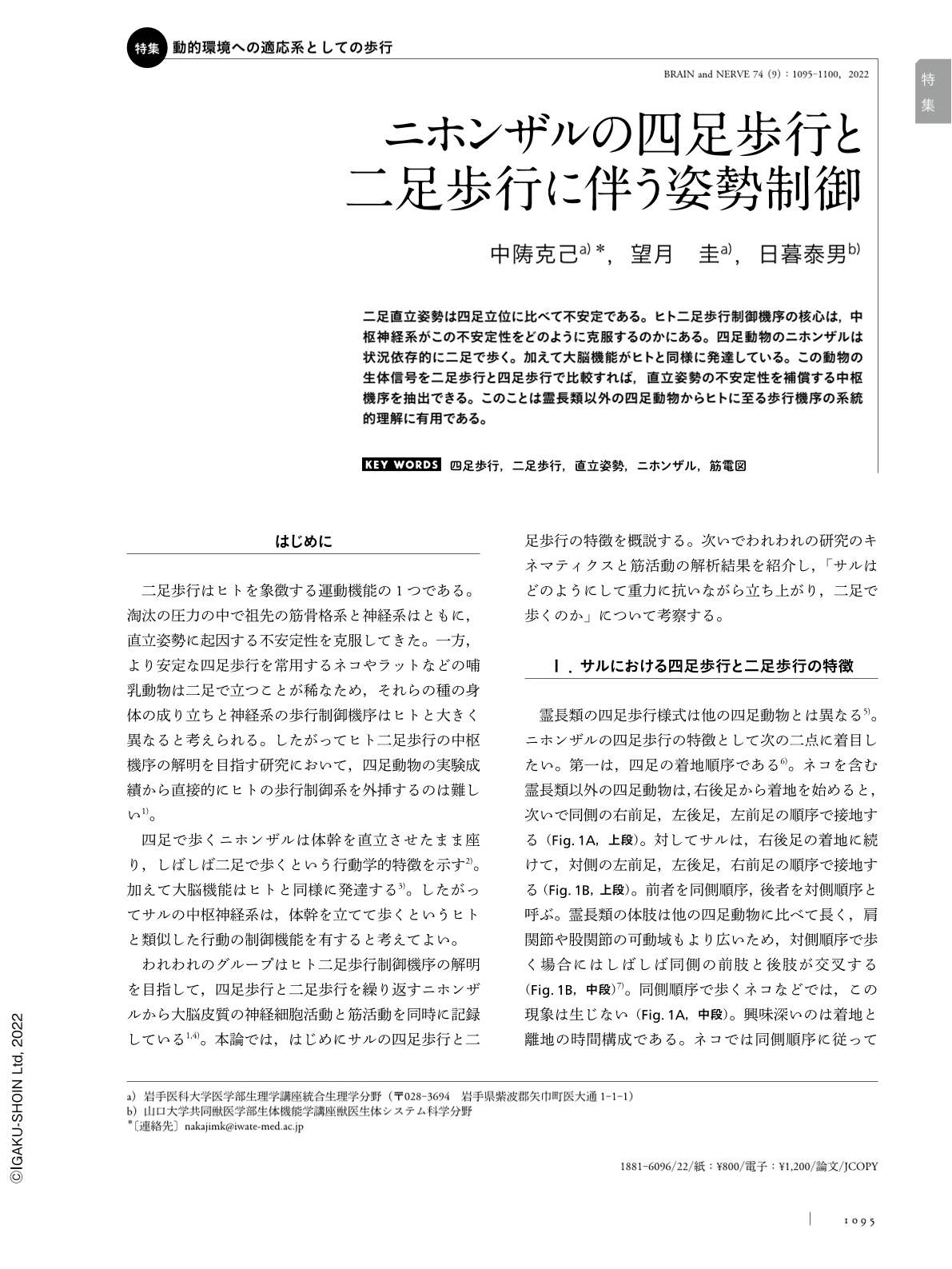Japanese
English
- 有料閲覧
- Abstract 文献概要
- 1ページ目 Look Inside
- 参考文献 Reference
二足直立姿勢は四足立位に比べて不安定である。ヒト二足歩行制御機序の核心は,中枢神経系がこの不安定性をどのように克服するのかにある。四足動物のニホンザルは状況依存的に二足で歩く。加えて大脳機能がヒトと同様に発達している。この動物の生体信号を二足歩行と四足歩行で比較すれば,直立姿勢の不安定性を補償する中枢機序を抽出できる。このことは霊長類以外の四足動物からヒトに至る歩行機序の系統的理解に有用である。
Abstract
How the CNS deals with instability of upright posture is the core in the control of bipedal gait. In this review, we summarize our recent findings comparing kinematics and EMG activity during quadrupedal and bipedal gait in Japanese macaques. Trunk/hindlimb muscles showed step cycle-modulated activity, which was more active in bipedal than in quadrupedal gait. For bipedal gait, enhanced activity during longer double support phase was predominantly observed in distal hindlimb muscles. Alternate burst activity in bilateral back muscles cyclically brought back the tilted trunk. In monkeys' quadrupedal gait, hindlimbs formed functional pairs with contralateral forelimbs, unlike in non-primate quadrupeds. These diagonal pairs acted differently on movements of the center of mass (COM). For bipedal gait, the hindlimbs solely carried the COM. Our results suggest that, compared to non-primate quadrupeds, hindlimbs in macaques contribute more critically to weight support and balance control even for quadrupedal gait. Additionally, for more unstable bipedal gait, the monkeys' CNS reinforces such hindlimb roles and actively controls the trunk posture in maintaining dynamic balance, in a manner similar to humans. Studies on Japanese macaques will further our understanding of the neural basis for the control of gait in mammals by bridging non-primate quadrupeds and humans.

Copyright © 2022, Igaku-Shoin Ltd. All rights reserved.


